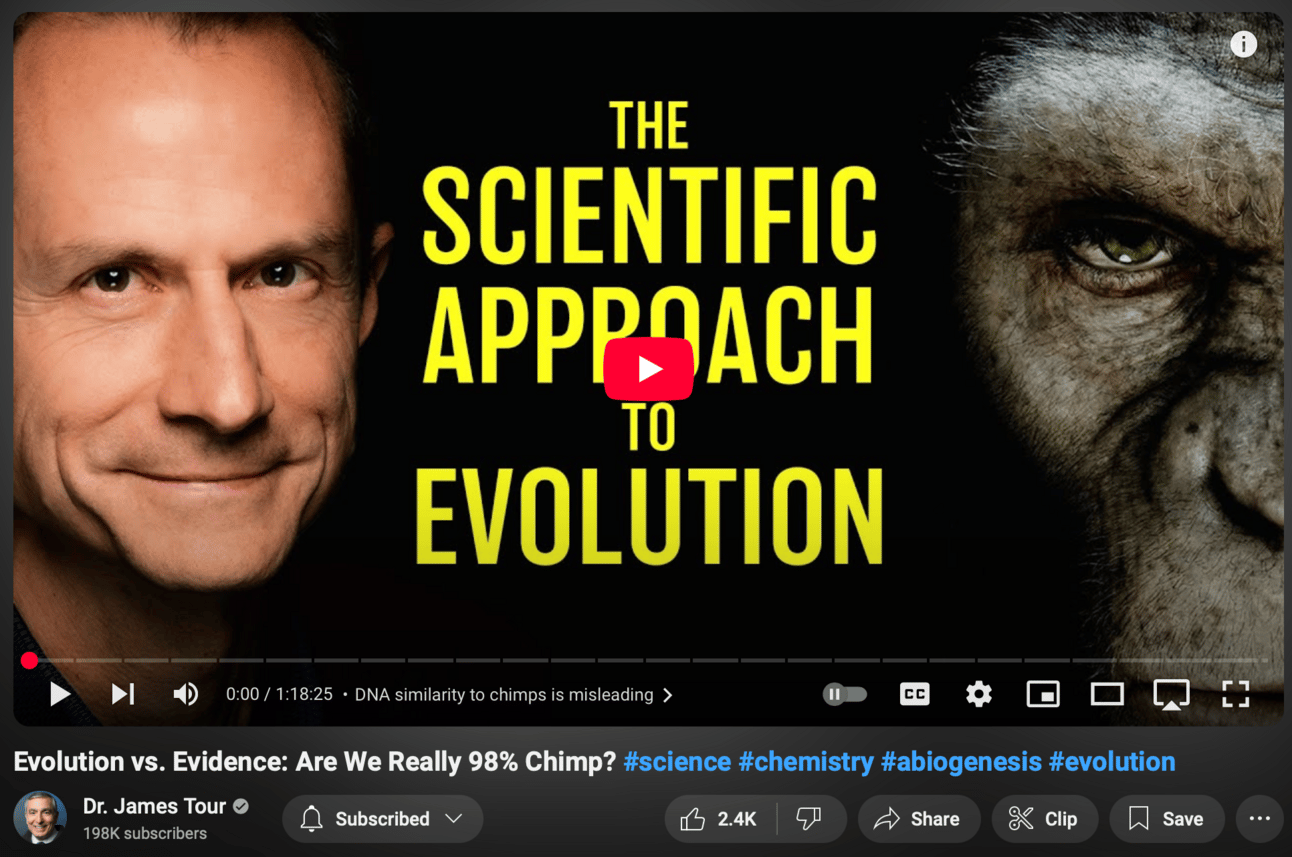It’s Saturday, April 5, 2025.
Today’s edition covers an archaeologist’s case for who he says is the Exodus pharaoh, a rise in assaults on Christians in Israel, four additional eschatological terms, and more.
“Do not reprove a scoffer, or he will hate you; reprove a wise man, and he will love you.” (Proverbs 9:8)
Of Christian Concern
ARCHAEOLOGIST REVEALS THE ALLEGED TOMB OF THE EXODUS PHARAOH
Biblical archaeologist Joel P. Kramer of Expedition Bible recently released a video report on his visit to the tomb of the pharaoh Amenhotep II, documenting evidence that this is the pharaoh referred to in the biblical book of Exodus.
The tomb in the Valley of the Kings near ancient Thebes in Egypt was originally excavated in 1898 by Victor Loret, who found not only Amenhotep II’s sarcophagus but, surprisingly, his mummy inside its coffin.
Here is the primary evidence Kramer presents to argue that Amenhotep II is the Exodus pharaoh.
1. Buried son
In addition to Amenhotep II’s mummy, Loret and his team found the mummy of a boy between 11 and 15 with the defining ponytail called the “Horus lock” or “prince’s lock.”
Based on artifacts in the tomb bearing his name, this is presumed to be Amenhotep II’s son, Webensenu. Kramer explains that Webensenu’s burial there strongly suggests he died before his father because pharaohs’ tombs were sealed off after the pharaoh was buried.
The royal prince dying before his father fits with the biblical narrative of the plague of the death of the firstborn, which killed the pharaoh’s firstborn son (Exodus 12: 29).
2. Boil-like sores
Kramer reports that scholar G. Elliot Smith, who studied Amenhotep II’s mummy, wrote in The Royal Mummies, “The skin over the whole body is thickly studded with small projections or tubercules,” which are “certainly unusual.” Kramer adds that it is the only mummy found with such a feature, which can still be seen on the mummy today displayed at the Egyptian Museum in Cairo, Egypt.
Though the cause of these “tubercules” is uncertain, it could fit with the biblical narrative of the plague of boils (Exodus 9:10-11).
3. Timeline
For reasons he explains in the video, Kramer dates the Exodus to 1446 BC, meaning it must have occurred during the 18th Dynasty of Egypt (c. 1550 BC-1292 BC), which includes Amenhotep II’s and his father’s reigns. Amenhotep II’s father, Thutmosis III, was the longest-reigning pharaoh in that dynasty, lasting 54 years (1490-1436 BC).
This also fits with the biblical narrative, which recounts the “long period” of Moses’ exile in Midian—40 years (Acts 7:30)—during which time “the king of Egypt” from whom Moses had fled “died” (Exodus 2:15, 23). So, “the predecessor of the Exodus pharaoh” must have had “a very long reign of over 40 years,” Kramer says, “and the only pharaoh in the 18th Dynasty that reigned for more than 40 years is Thutmosis III.”
For more of the fascinating details, watch the full video
Subscribe for free to receive new posts.
Also Noteworthy
→ A free trade deal between The United Kingdom (UK) and the United States may be at risk over the UK’s handling of pro-life activist Livia Tossici-Bolt, who was arrested for holding a sign outside an abortion clinic that read “Here to talk, if you want.” The Telegraph reports that UK Prime Minister Keir Starmer has been warned there will be no free trade without free speech.
→ The Trump administration paused federal funding (tens of millions of dollars) to nine Planned Parenthood state affiliates over “‘possible violations’ of federal civil rights law and President Donald Trump’s executive orders,” POLITICO reports.
→ “Masked gunmen [in Pakistan] robbed a Christian man and then tied him up and gang-rape his wife after learning the couple’s faith,” reports the Christian Post.
→ A female fencer at a USA Fencing event, in a “historic protest,” took a knee instead of dueling with a trans-identified male. She was disqualified.
→ Attacks on Christians in Israel increased in 2024. A new report from the Jerusalem-based Rossing Center for Education and Dialogue analyzes “harassment and violence” toward “Christian communities in Israel and East Jerusalem” last year and “documents a rise in incidents of intimidation and aggression.” Of 111 incidents recorded,
46 were physical attacks (often spitting)
35 were attacks on church properties
14 were defacement of public signs
13 were harassment
3 were violations of freedom of religion or belief
Content Catch-Up
Recent, notable content of Christian interest.*
→ Pastor vs. Georgia Politicians: Jeff Durbin, pastor of Apologia Church in Arizona and head of End Abortion Now, testifies before Georgia legislators in support of the state’s abortion abolition bill, sparring with a Jewish legislator about religious liberty and a black legislator about history. (Video)
→ “Evolution vs. Evidence: Are We Really 98% Chimp?”: Renowned chemist and devout Christian Dr. James Tour interviews biomedical engineer Dr. Rob Stadler on his new book The Scientific Approach to Evolution, offering critiques from a scientific perspective on the theory of evolution. (Interview)
*Not necessarily an endorsement
The Bible, Briefly
Eschatological Futurism and Historicism
This is the third installment of a four-part series defining basic terms in Christian eschatology (the study of last things, i.e., the end times).
In last week’s “The Bible, Briefly,” we outlined four eschatological categories: Futurism, Historicism, Idealism, and Preterism. The week before that, we outlined three others: Premillennialism, Postmillennialism, and Amillennialism.
At the intersections of these two sets of categories, there are at least eight subcategories, though people sometimes mix and match aspects of one or another. Here they are (the first four this week, the final four next week), summarized from Ready to Harvest’s excellent video surveying the views.
Futurism
1. Premillennial Futurism: the belief that “the eschatological events are mostly [in the] future . . . and the Millennium is before the second coming.”
There is a good bit of variety under this umbrella. For example, premillennial futurism includes dispensationalists, those who maintain a strict distinction between Israel and the Church and believe in a future purpose for national Israel, and those “historic premillennialists” who strongly oppose this view.
Two essential ideas in premillennial futurism are…
The Great Tribulation (so titled based on Matthew 24:21; also referred to as “Daniel’s sevenieth week” based on Daniel 9:24): a period of seven years before the Millennium during which many of the eschatological events occur, including the seal judgments (Revelation 6:12), trumpet judgments (8:6-7), thunder judgments (10:4), and bowl/vial judgments (15:7). Only premillennial futurists understand “the Great Tribulation” in this way.
The Rapture: an event during which believers will be physically removed from the world—i.e., “caught up” in the air with Christ (1 Thessalonians 4:17).
Premillennial futurists fall into one of a few categories regarding the rapture:
Pre-tribulation (think: the Left Behind series)—the rapture will occur before the Great Tribulation
Post-tribulation (i.e., the “historic premillennialist” view)—the rapture will occur after the Great Tribulation, at the Second Coming and introducing the Millennium
Mid-tribulation/pre-wrath—the rapture will occur at some point in the middle of the Great Tribulation, such as before the pouring out of God’s wrath.
Note: All the other perspectives below (Historicism, Idealism, and Preterism) believe the rapture is simultaneous with Christ’s Second Coming, and their adherents, therefore, may not even use the word “rapture.”
Historicism
2. Premillennial Historicism: “Eschatological events are mostly in the current church age, sequentially, as symbolic descriptions of literal events.” We live in this church age now, which will be followed by the Second Coming and then the Millennium. — Note: most premillennialists today are not historicists but futurists.
3. Postmillennial Historicism: “Most events of Revelation [occur] throughout history (Now),” and “the Millennium will slowly ramp up” (which may be happening now), followed by the Second Coming and Final Judgment. — Note: Most postmillennialists today are not historicists.
4. Amillennial Historicism: “Most events of Revelation [occur] throughout history” (possibly still being fulfilled today), and “the Millennium is a spiritual reality happening now,” which will be followed at any time by the Second Coming and Final Judgment. — Note: Most amillennialists today are not historicists.
Note: “Historicism was the favorite view of [early] Protestantism,” though there is debate about which categories, as defined today, the Reformers would fall into.
To be concluded… Four more to go!
Enjoyed today’s briefing? Get the next one in your inbox.





